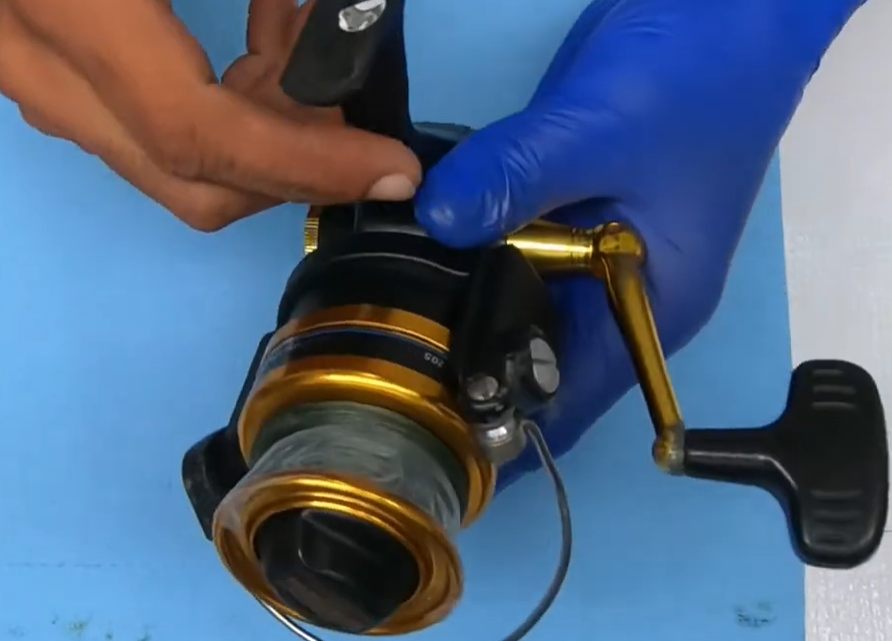A spinning reel may become hard to turn due to dirt accumulation or lack of lubrication. Internal damages or misalignment could also contribute to the stiffness.
Troubleshooting a spinning reel that is difficult to turn is crucial for any angler looking to maintain their fishing gear effectively. A spinning reel should operate smoothly, allowing you to cast and retrieve without resistance. But over time, factors like debris, sand, or salt can find their way into the moving parts, leading to a gritty feeling when you turn the handle.

Neglecting regular maintenance, such as lubricating the gears and cleaning the reel, can cause the components to grind against each other, making it tough to reel in. Corrosion from water, especially saltwater, can also cause internal parts to seize up.
If the reel has been dropped or handled roughly, the internal gears might be misaligned or damaged, requiring professional repair to get back in full swing. Identifying the root cause early on helps in preserving the life and performance of your spinning reel. Let’s explain Why is My Spinning Reel Hard to Turn?
Cleaning The Reel
Feeling resistance when you turn your spinning reel can be more than just an inconvenience—it can compromise your angling performance. Often, the culprit is a need for a thorough cleaning. Regular maintenance doesn’t just extend the life of your reel; it ensures smoother operation and improves your overall fishing experience. Let’s Plunge into the steps you can take to keep your reel turning effortlessly.
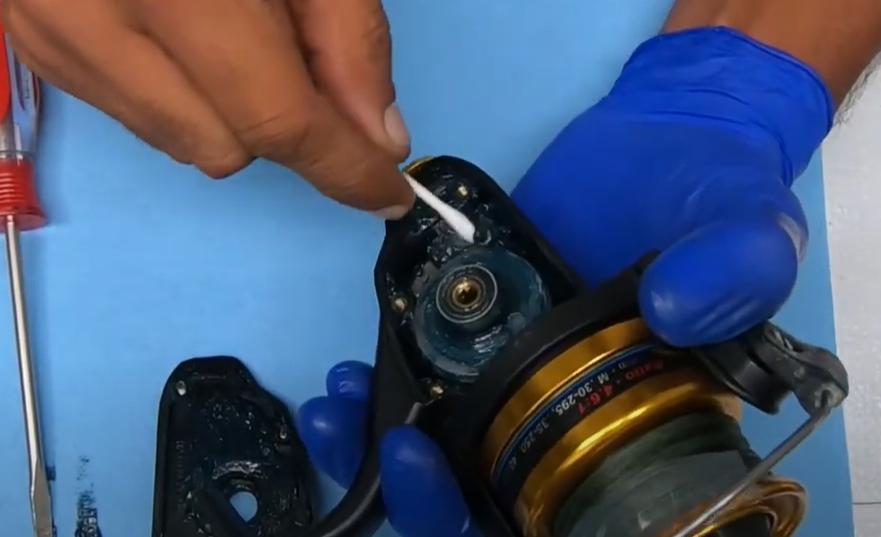
Removing Dirt And Debris
The first step in rejuvenating your spinning reel is to eliminate all foreign material that’s accumulated over time. Dirt, sand, and other particles can create significant friction, making the reel tough to turn. Follow these steps to ensure a clean reel:
- Begin by disassembling your reel according to the manufacturer’s instructions. Keep track of all parts and their order for reassembly.
- Use a soft brush or cloth to gently remove debris from each component. Toothbrushes work well for this task.
- Wash all non-metal parts with warm, soapy water. Be cautious with metal components as water can cause corrosion. Instead, wipe these down with a damp cloth.
- Dry all parts completely before reassembly. A hairdryer on a low, cool setting can help speed up the process.
Lubricating Moving Parts
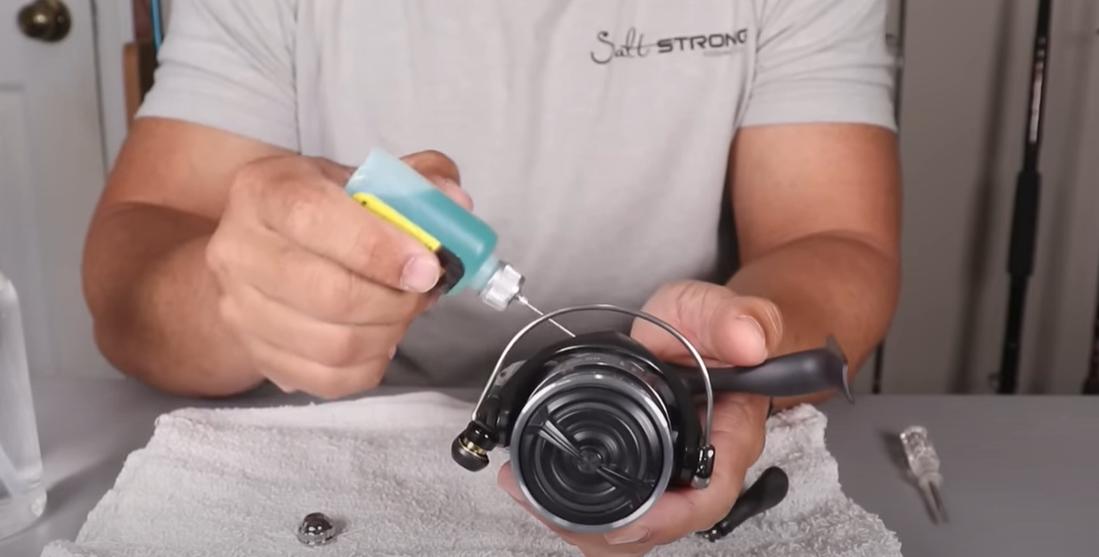
After cleaning, the next critical step is to lubricate your spinning reel’s moving parts. Proper lubrication reduces wear and tear, fights against rust, and keeps the mechanism functioning smoothly. To lubricate your reel effectively, consider the following:
- Select a high-quality lubricant designed specifically for fishing reels. Standard oils and greases are not recommended as they may not be water-resistant and could damage sensitive parts.
- Apply a small amount of lubricant to gears, bearings, and any other moving parts. Be sure not to over-lubricate, as excess can attract more dirt and create a gunky buildup.
- For the main shaft and handle, a light coating of grease will help prevent rust and ensure smooth operation.
Consistent care, including dedicated cleaning and lubrication, will keep your spinning reel operating as seamlessly as the day you got it. Embrace these maintenance rituals and look forward to your next smooth and successful fishing trip.
Inspecting For Damaged Components
A smoothly operating spinning reel is essential for an enjoyable fishing experience. Difficulty in turning the reel often signals a problem with its components. Regular inspection and maintenance can prevent potential issues and prolong the life of your gear. Let’s break down the areas to check for any damage.
Bail Arm
The bail arm is crucial for line control during casting and retrieval. A faulty bail arm could be the culprit behind a stiff reel. Look for these signs:
- Bent or deformed metal that impedes movement.
- Loose screws that may need tightening.
- Corrosion or dirt buildup restricting motion.
Regular cleaning and lubrication can keep the bail arm functioning smoothly.
Gear
The gear system is the heart of your reel’s operation. Damaged gears can severely affect performance. Consider the following:
| Component | Signs of Damage |
|---|---|
| Teeth | Chipped, worn or missing teeth. |
| Gear Alignment | Improper meshing with adjacent gears. |
| Lubrication | Insufficient or dirt-contaminated grease. |
Addressing gear issues promptly ensures smoother operations and reduces strain on the reel.
Handle Bearings And Anti-reverse Mechanism
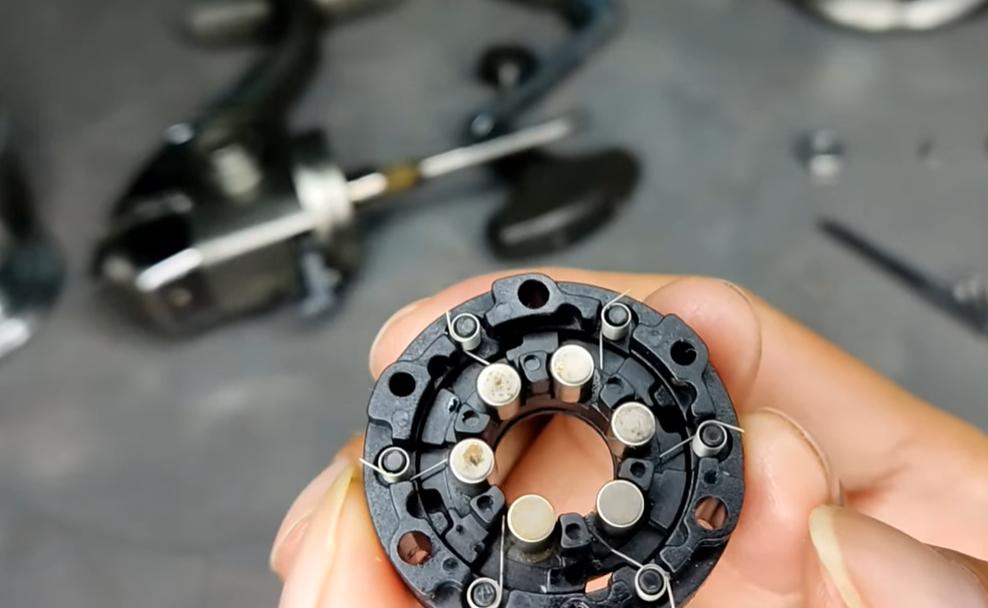
The handle’s rotation relies on its bearings, while the anti-reverse mechanism prevents backward motion. When these are compromised, turning the reel becomes challenging. Examine these parts for:
- Grinding or unusual noises while turning the handle.
- Excessive play or wobble in the handle.
- Failure of the reel to lock in place when anti-reverse is engaged.
Cleaning, lubricating, or replacing worn bearings and parts will restore functionality to your reel. Be mindful to seek professional assistance for complex repairs to avoid further damage.
Adjusting The Drag System
Experiencing stiffness in your spinning reel can often signal issues with the drag system. The drag allows for smooth and controlled unwinding of the line when a fish takes the bait, but if not properly calibrated, it could lead to a hard-to-turn handle. Mastery in adjusting the drag ensures that your fishing expeditions stay both effective and enjoyable. Let’s Plunge into the heart of the drag system: the drag washers.
Checking Drag Washers
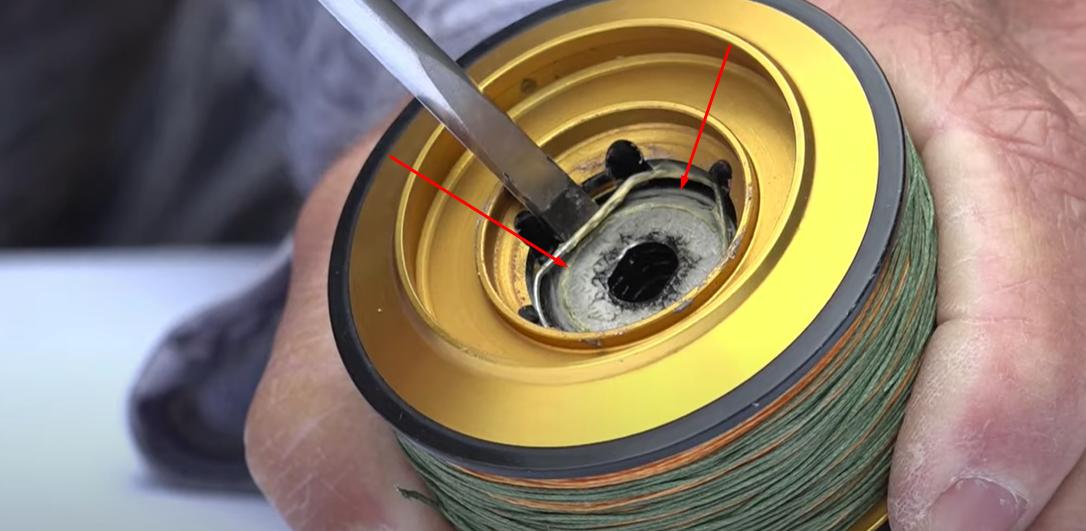
Drag washers play a pivotal role in the functioning of your spinning reel. They are the friction plates that control how much resistance a fish feels when pulling on the line. Here are steps to check them:
- Begin by unscrewing the drag knob and carefully remove the spool from the reel.
- Inspect the drag washers for any signs of wear or damage like grooves or warping.
- Clean any debris or old grease off the washers using a mild, soapy solution and a soft cloth.
- After cleaning, apply a light coat of drag grease to ensure smooth operation.
- If the washers show significant wear, it’s time to replace them.
Replacing Or Tightening Tension
Should the washers appear to be in poor condition or your reel’s tension feels inconsistent, here’s how to remedy the situation:
- Replacement: Obtain new washers that accurately match your reel’s model. Replace the old washers with the new ones, aligning them correctly.
- Tightening tension: Reassembly of the spool and drag knob must be precise. Adjust the knob until you feel a firm yet manageable tension on the line.
Proper maintenance and occasional adjustments to the spinning reel’s drag system can save a day on the water and prolong the lifespan of your equipment. Ensure every turn of your reel’s handle is seamless by regularly checking and tuning your drag washers, and tightening the tension when needed. A well-adjusted drag system translates to better control over your catch and ultimate fishing success.
Regular Cleaning And Lubrication
Imagine cast after cast, your spinning reel starts to resist and becomes increasingly difficult to turn. This common issue can often be attributed to neglecting two crucial maintenance routines: regular cleaning and lubrication. A well-maintained reel not only performs better but also extends its life. To maintain the smooth performance of your reel, a consistent cleaning schedule and appropriate lubricating techniques are essential.
Cleaning Schedule
Establishing a regular cleaning schedule is pivotal for keeping your spinning reel operating smoothly. Cleaning should involve:
- Wiping down the reel after each use to remove dirt and debris.
- Disassembling the reel for a thorough clean periodically, depending on the frequency of use.
- Use a soft-bristled brush or cloth and mild soapy water to gently clean parts.
- Rinsing with fresh water and drying completely before reassembly.
For the best results, follow the manufacturer’s guidelines or use a tailored cleaning schedule based on your fishing environment and usage patterns.
Lubricating Techniques
Correct lubrication is equally as important as cleaning. To ensure the smooth operation of your spinning reel, apply these lubricating techniques:
- Use only reel-specific lubricants; generic oils and greases can damage your reel.
- Apply lubricant sparingly. Excessive amounts can attract more dirt and may impair reel performance.
- Target the main gear, pinion gear, and spool shaft for oiling, as these areas are crucial for smooth rotation.
- Frequently check the bail roller and the line roller for smooth movement, and add a drop of oil if necessary.
- Grease the handle knobs and drag system only as required and according to the reel’s design and instructions.
Regular lubrication not only makes the reel easier to turn but also protects against corrosion and wear. A properly lubricated reel directly impacts its longevity and your success on the water.
Proper Storage Practices
Welcome to the vital segment about Proper Storage Practices for your spinning reels. A common issue faced by anglers is finding that their reel has become tough to turn. Often, this frustrating hindrance can be traced back to how the reel is stored when not in battle with the fish. To maintain the optimal performance of your spinning reel, let’s Plunge into the finessed art of storing your equipment correctly.
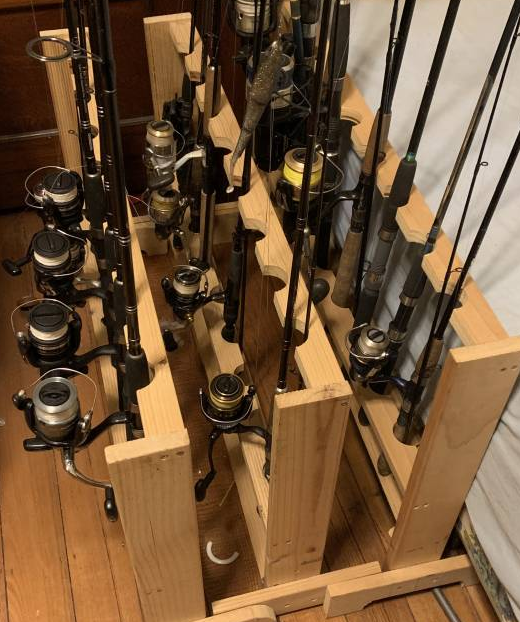
Storage Environment
Your spinning reel’s longevity is heavily influenced by the environment in which it is stored. Ideal storage conditions ensure that issues like stiffness and resistance during usage are minimized. Here are key points to consider:
- Humidity Levels: Keep reels in a dry environment to prevent rust and corrosion.
- Temperature Control: Avoid extreme temperatures which can damage the reel’s components.
- Dust-Free Area: Store in a place that’s free from dust and grime to ensure smooth reel movement.
Reel Protection
Giving your reel the right armor for off-season or between trips is critical. Follow these tips to protect your investment:
- Clean your reel thoroughly before storage to remove any debris or salt residue.
- Apply a light coat of oil or reel grease on the moving parts to prevent them from seizing up.
- Engage the reel’s line and wrap it without overtension to prevent the line from kinking or warping over time.
- Reel Covers or Cases: Use protective gear designed for your reel to shield it from physical damage.
Professional Servicing
Avid anglers understand that smooth-operating fishing gear is crucial for an efficient and enjoyable fishing experience. Among the array of issues that can plague your fishing equipment, a hard spinning reel to turn is one that requires immediate attention. While some minor issues can be addressed through DIY maintenance, professional servicing steps in as a surefire way to ensure your fishing expeditions don’t hit a snag.
Importance Of Professional Inspection
Having your spinning reel inspected by a professional comes with several benefits:
- Detailed diagnosis: Specialists possess a keen eye for detecting intricate problems that might be invisible to the untrained eye.
- Quality equipment care: Professionals utilize the correct tools and procedures, minimizing the risk of inflicting further damage.
- Longevity: Regular pro inspections can extend the life of your reel by addressing issues before they escalate.
- Guaranteed performance: After a professional tune-up, you can expect a significant improvement in the reel’s smoothness and functionality.
When To Seek Professional Help
Consider the following scenarios to determine if it’s time to call in the experts:
| Signs | Action Needed |
|---|---|
| The reel has suffered a heavy impact or fall | Professional inspection and lubrication |
| Visible rust or corrosion | Thorough cleaning and possibly parts replacement |
| Unusual noises during retrieval | Detailed assessment to pinpoint and resolve internal gear issues |
| Reel has suffered a heavy impact or fall | Comprehensive check to ensure integrity and function |
If you experience any of these issues, prompt action is crucial. Waiting can lead to worsened conditions and eventually a complete reel failure.
To maintain peak performance and prevent unnecessary wear and tear, scheduling regular professional servicing for your spinning reel is advisable. This proactive approach keeps surprises at bay and ensures that your fishing trips remain as rewarding and effective as possible. Seek a qualified technician who specializes in spinning reels, and rest assured that your equipment is in good hands.
Frequently Asked Questions For Why Is My Spinning Reel Hard To Turn
Why Does My Spinning Reel Feel Stiff?
If you find yourself wondering, “Why is my spinning reel hard to turn?” or asking, “Why does my spinning reel feel stiff?” it’s essential to address the issue for a smoother fishing experience. Several factors can contribute to these problems, including inadequate lubrication and wear and tear.
To make your spinning reel smoother, start by addressing the lubrication. Regularly applying a high-quality reel lubricant is key to maintaining optimal performance. If you’re unsure how to lubricate a spinning reel, Wayne’s Reel Repair provides expert guidance on reel maintenance.
In some cases, the handle may need attention. Try removing the handle and inspecting for any debris or damage that could be causing the stiffness. Wayne’s Reel Repair is known for its expertise in addressing such concerns, and it caters to many brands.
If your spinning reel feels stiff after use, it might be time to investigate further. Wayne’s Reel Repair can help diagnose and fix the issue, ensuring your reel functions smoothly. Don’t let spinning reel problems hinder your fishing adventures; tackle them head-on for a trouble-free angling experience.
Can Drag Settings Affect Reel Turning Ease?
Improperly set drag can make a reel hard to turn. If the drag is too tight, it puts extra strain on the reel’s internal components. Adjust the drag setting according to your fishing line’s strength to ensure smooth operation.
What Causes A Reel To Turn Roughly?
A rough-turning reel is commonly caused by debris or corrosion inside the mechanism. Water exposure, especially saltwater without proper cleaning, can lead to corrosion. Disassemble and clean the reel thoroughly, replacing any corroded parts, to fix this issue.
How Could A Bent Reel Shaft Impact Turning?
A bent shaft in a spinning reel disrupts the balance of the spool movement. This mechanical issue creates resistance and makes the reel difficult to turn. Inspection and replacement of the shaft are necessary to restore smooth functionality.
Conclusion
Encountering a sticky spinning reel can be frustrating for any angler. Addressing issues from tangled lines to lubrication can markedly improve your fishing experience. Remember, regular maintenance is key to smooth reel operation. For more in-depth guides and tips, keep casting your line into our pool of informative articles.
Stay proactive and make every fishing trip a seamless adventure!

